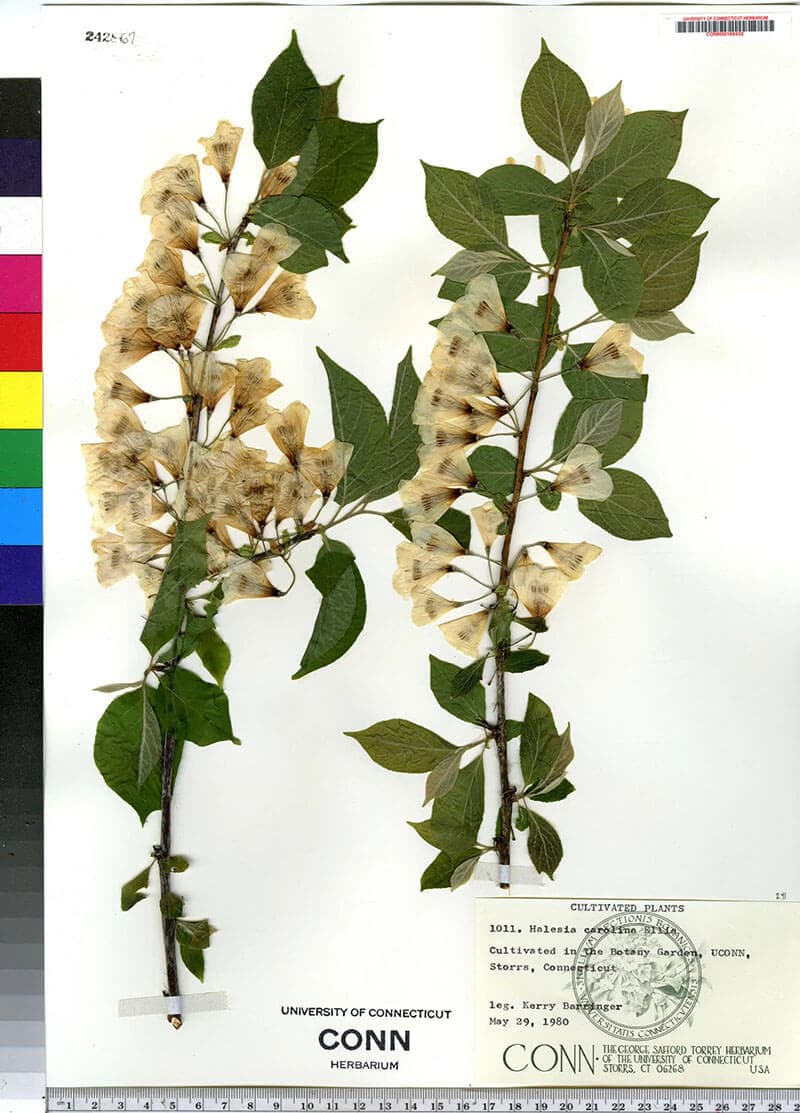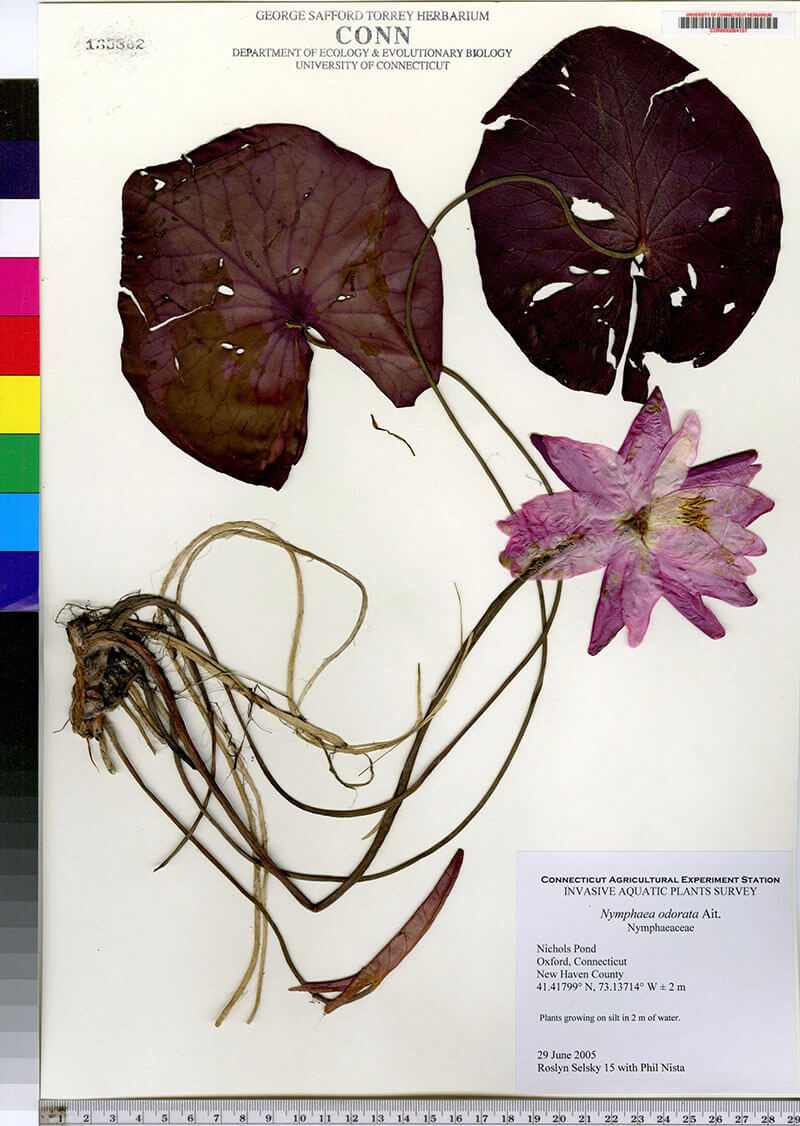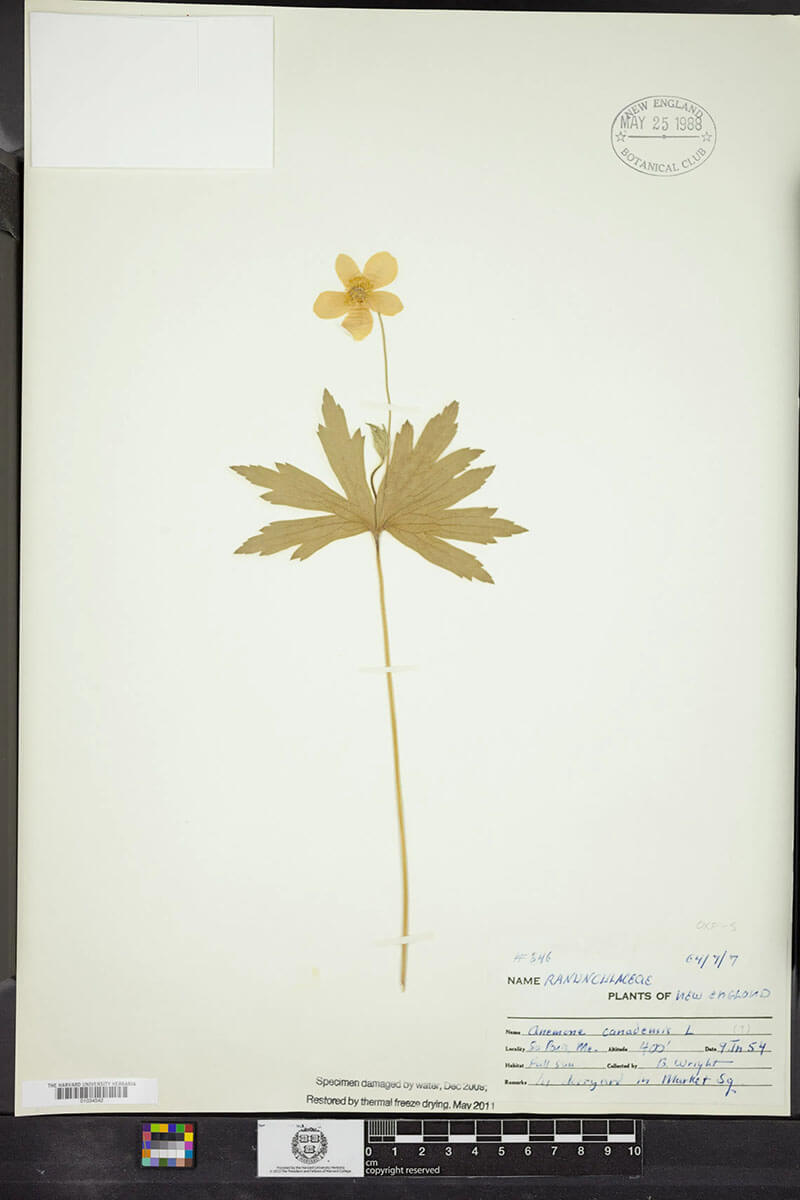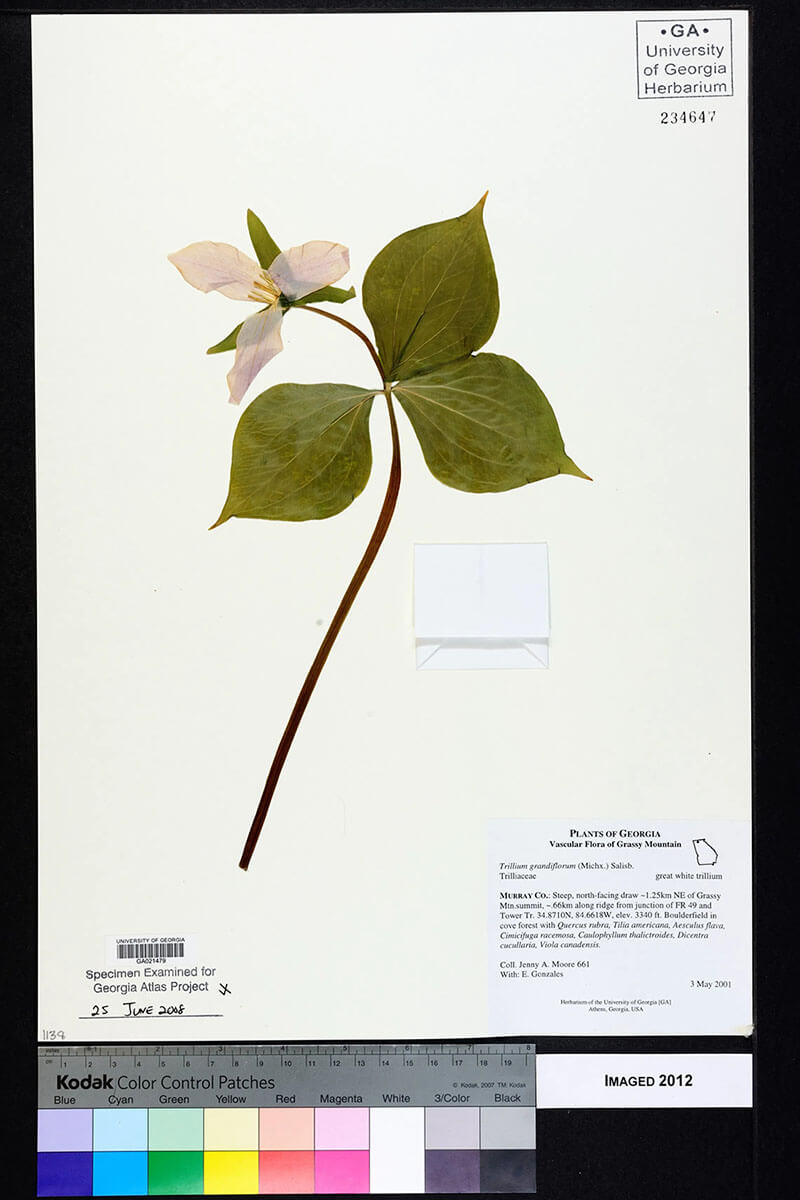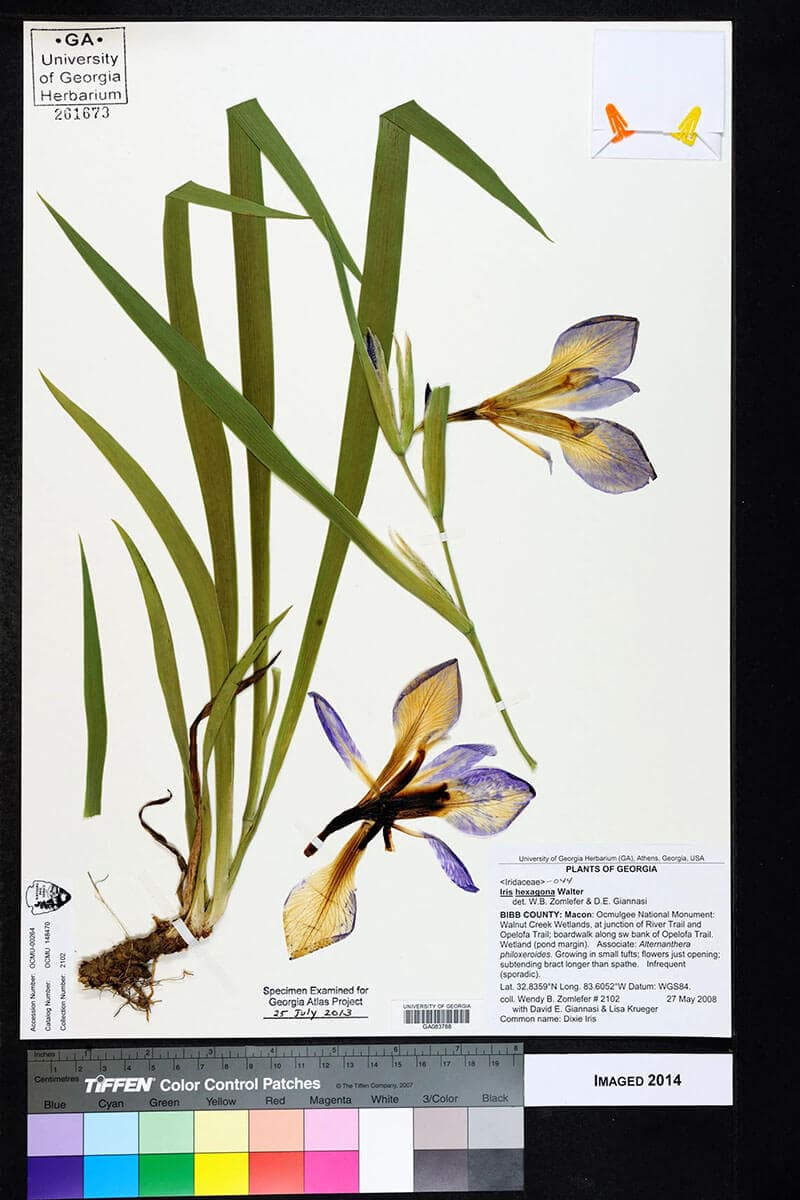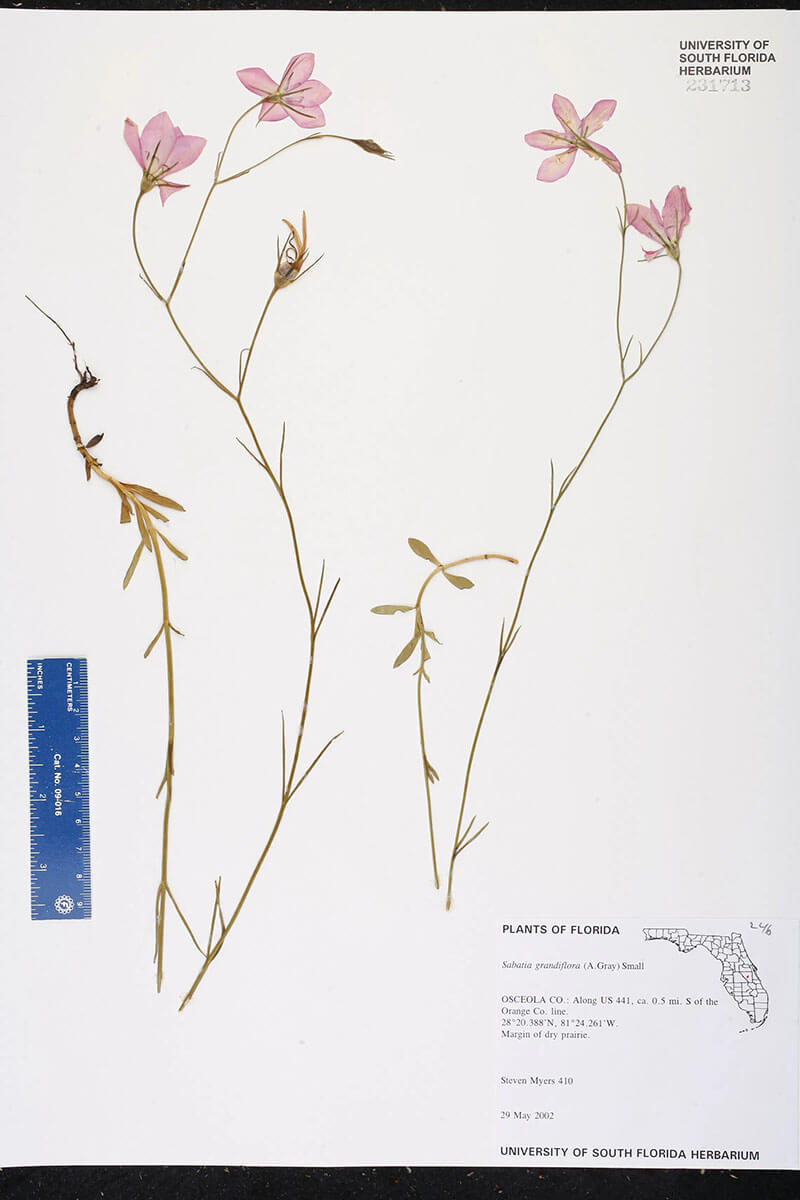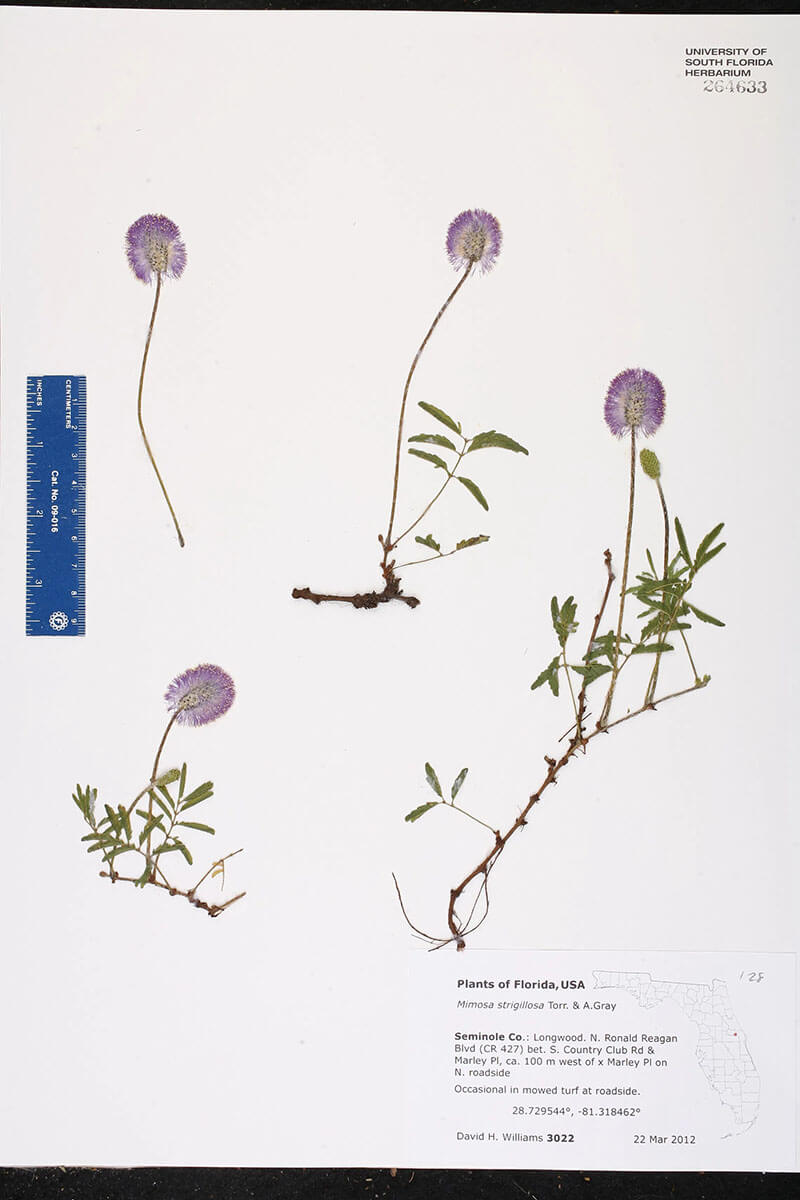Herbarium specimens such as those above represent snapshots of phenology (i.e., flowering, fruiting, etc.) at a specific place and time, and have shown tremendous promise to increase the spatial, temporal, and taxonomic resolution of phenological data. To harness this potential, we used a crowdsourcing platform for extracting phenological information from digitized specimens called CrowdCurio. With our collaborators, we use such tools to study how populations, species, and communities respond to climate change in terms of their reproductive timing. Along these lines we have shown that while plants tend to advance their flowering and fruiting with warmer spring temperatures, but the degree to which respond varies greatly even within species. Currently, we are expanding the geographic and taxonomic scope of phenological examinations with collaborators across the globe. We are also collaborating with computer scientists to harness artificial intelligence to more efficiently extract phenological information from herbarium specimens. We are further excited to investigate whether phenological mismatches between plants and animals are increasing with global change.
Relevant publications:
- *Xie, Y., Thammavong, H. T., and *Park, D. S. (2022) “The ecological implications of intra- and inter-species variation in phenological sensitivity.” New Phytologist, 236: 760–773 [LINK] [PDF]
- *Park, D. S., *Xie, Y., Ellison, A. M., Lyra, G. M., and Davis, C.C. (2023) “Complex climate mediated effects of urbanization on plant reproductive phenology and frost risk.” New Phytologist, https://doi.org/10.1111/nph.18893. [LINK] [PDF]
- *Park, D. S., Newman, E. A., and Breckheimer, I. K. (2021) “Scale gaps in landscape phenology: challenges and opportunities.” Trends in Ecology and Evolution, 38(8): 709–721 [LINK] [PDF]
 Biological Invasions and Community Assembly
Biological Invasions and Community Assembly
Increasing human influences across the globe have facilitated the displacement of numerous species, thus causing the invasion of alien species into novel, non-native habitats. Such biological invasions have brought about widespread ecological, evolutionary, economic and social consequences. However, it has proven difficult to quantify and/or make generalizations about traits, characteristics, and circumstances that contribute to invasions across multiple taxa, geographic scales and ecological systems.
Along these lines, Charles Darwin proposed two seemingly contradictory hypotheses regarding factors influencing the outcome of biological invasions in On the Origin of Species. Darwin first posited that non-native species closely related to native indigenous species would be more likely to successfully establish, because they might share adaptations to the local environment. This 'pre‐adaptation hypothesis' emphasizes the role of environmental filtering in biological invasions. However, based on the observations of Alphonse de Candolle and Asa Gray that the majority of naturalized plant species in the United States belonged to non-native genera, Darwin concluded that "floras gain by naturalization, proportionally with the number of the native genera and species far more in new genera than in new species", and hypothesized that "As species of the same genus have usually, though by no means invariantly, some similarity in habits and constitution, and always in structure, the struggle will generally be more severe between species of the same genus, when they come into competition with each other, than between species of distinct genera". This notion that the lack of competitive exclusion would facilitate the establishment of alien invaders phylogenetically distinct from the native flora has become known as 'Darwin’s naturalization hypothesis'.
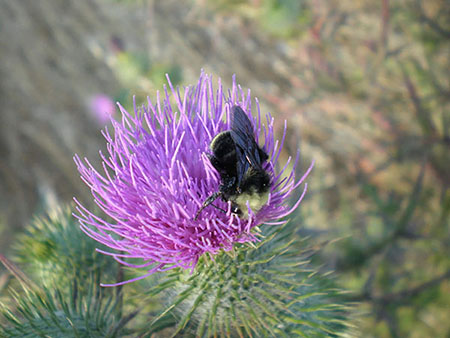
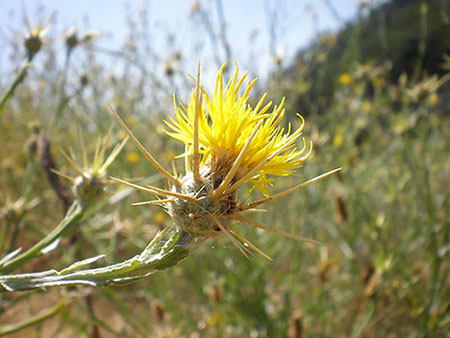
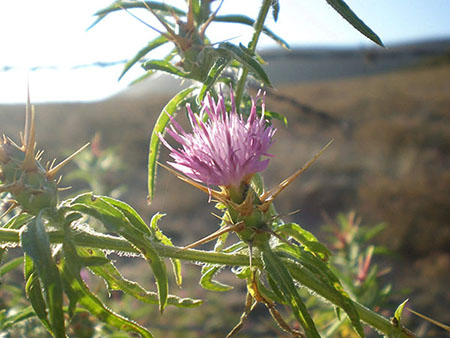
Bull Thistle (Circium vulgare), yellow starthistle (Centaurea solstitialis) and purple starthistle (Centaurea calcitrapa).
We investigate Darwin’s dueling hypotheses using robust molecular phylogenetic frameworks, functional trait analyses, and big data. We have identified that introduced taxa closely related to natives are more likely to become invasive in Mediterranean climate regions. Furthermore, we demonstrated that this pattern is partly explained by phylogenetic niche conservatism and superior dispersal traits pre-adapted to the invaded range. However, we are still a ways from a robust theoretical framework that can explain invasion success, and we are examining whether the observable properties of biological invasions change predictably with spatial and evolutionary scale and can be summarized via scaling rules.
Relevant publications:
- Park, D. S., Feng, X., Maitner, B. S., Ernst, K. C., and Enquist, B. J. (2020) "Darwin’s naturalization conundrum can be explained by spatial scale." Proceedings of the National Academy of Sciences, 117(20): 10904–10910 [LINK] [PDF]
- Park, D. S. and Potter, D. (2015) "Why close relatives make bad neighbours: phylogenetic conservatism in niche preferences and dispersal disproves Darwin’s naturalization hypothesis in the thistle tribe." Molecular Ecology, 24(12): 3181–3193. [LINK] [PDF]
- *Park, D. S. and D. Potter (2013) “A test of Darwin’s naturalization hypothesis in the thistle tribe shows that close relatives make bad neighbors.” Proceedings of the National Academy of Sciences, 110(44): 17915–17920. Direct submission. [LINK] [PDF]
 Biogeography and Systematics
Biogeography and Systematics
A clear understanding of the evolutionary history of organisms is necessary to make inferences about the traits and characteristics individuals, populations, species, communities and biomes. As Theodosius Dobzhansky noted, “nothing in biology makes sense except in the light of evolution". The sunflower family, Asteraceae is home to both economically important crops such as lettuce, chicory, and artichoke and some of the world’s worst weeds. Though cosmopolitan in distribution, Asteraceae are particularly diverse in Mediterranean climate regions, of which flora are characterized by high species richness and clades with rapid diversification rates.
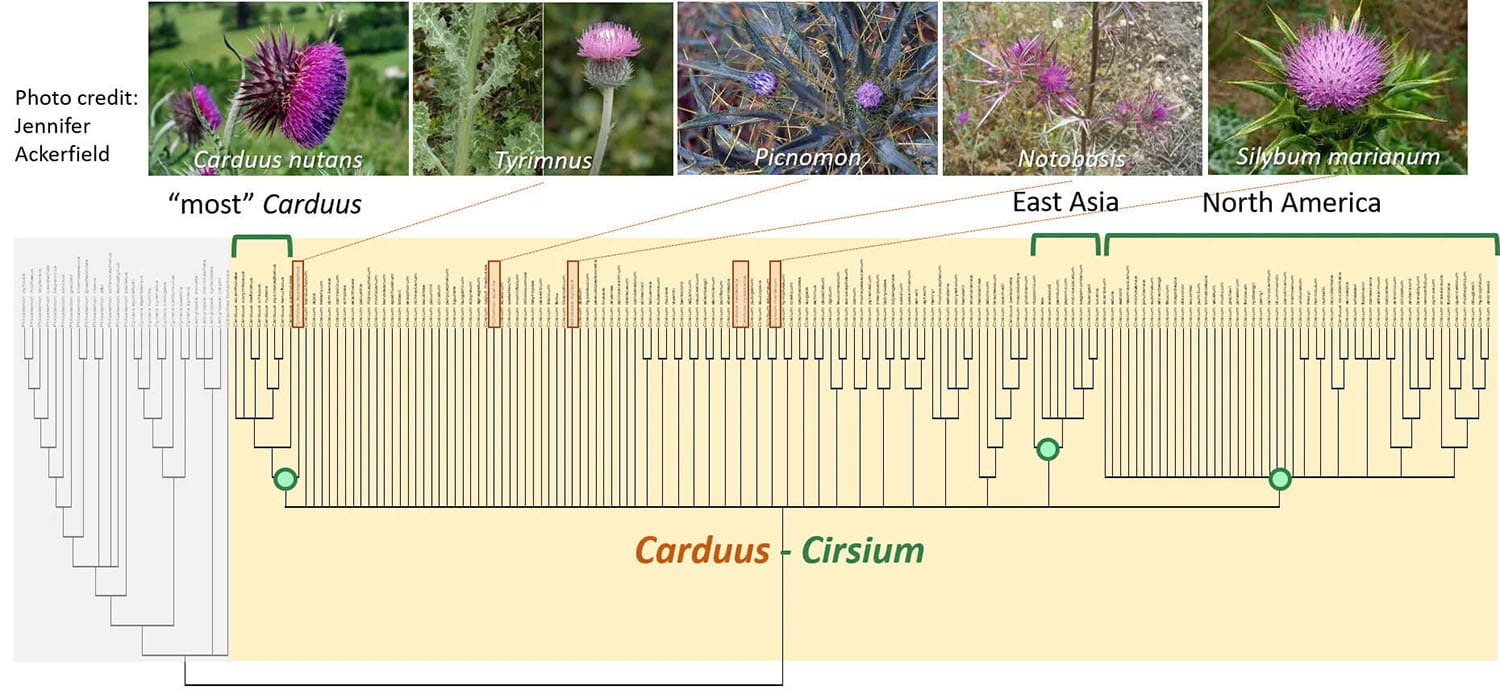
We use this group as a model system to understand how certain groups of plants have rapidly diversified and spread across the world. In particular, we are interested in the evolutionary history of thistles (Cardueae). Despite simultaneously harboring some of the world’s most rare and endangered species and some of the most invasive, the evolutionary relationships among species in this group remain elusive. Togethor with collaborators, we are thus working to resolve the phylogenetic and biogeographic history of this important clade with molecular systematics, diversification analyses, biogeographic reconstruction, phylogenetic comparative methods, and ecological niche modeling. We rely heavily on herbarium specimens to extract diverse data types, from morphological measurements that allow accurate identification of taxa to phylogenomic data obtained via next-generation sequencing. We also examine the roles of polyploidy, introgression, and mating system evolution in the spread and diversification of species in other plant groups as well.
Relevant Publications:
- Ackerfield, J. R., Sussanna, A., Kelch, D., Park, D. S., Thornhill, A. H., Arabaci, T., (2020) "A Prickly Puzzle: Generic delimitations in the Carduus-Cirsium group (Compositae: Cardueae: Carduinae)." Taxon, 69(4): 715–738 [LINK] [PDF]
- Park, CW., Bhandari, G. S., Won, H., Park JH., and *Park, D. S. (2018) "Polyploidy and introgression in invasive giant knotweed (Fallopia sachalinensis) during the colonization of remote volcanic islands." Scientific Reports, 8(1): 16021. [LINK] [PDF]
- *Park, D. S., Ellison, A. E., and Davis, C. C. (2018) ” Mating system does not predict niche breadth.” Global Ecology and Biogeography, 27(7): 804–813. [LINK] [PDF]
 Macroecological Patterns of Biodiversity
Macroecological Patterns of Biodiversity
Expanding global land-use and climate change are increasingly impacting the planet’s ecosystems. The maintenance of biodiversity and the essential resources and ecosystem services it provides are contingent upon natural and human-mediated adaptation at all levels of biological organization, from genes to species, populations and communities. The capacity for these changes is reflected in the local and regional diversity of genes, lineages, and functional traits. Thus, the rate and scope of how these multiple dimensions of biodiversity respond to current and future environmental conditions is key to assessing and predicting the impacts of climate change on ecosystem functioning. However, we still lack a robust theoretical and empirical understanding of how the relative contributions of the multiple dimensions of biodiversity and their interactions affect ecosystem function in natural, complex systems, limiting our ability to conserve, develop, and utilize biological resources.
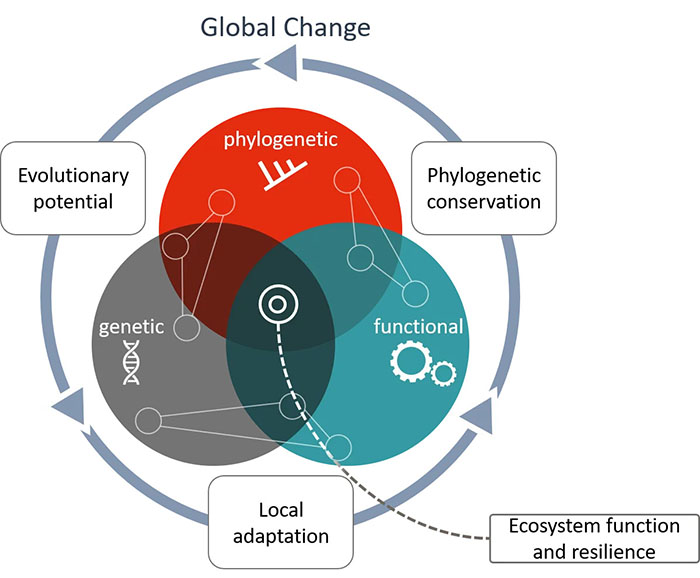
We work with the Biodiversity Information and Ecology Network and the Open Traits Network to quantify the multiple dimensions of plant diversity in communities across gradients of climate, geography, and human disturbance. This will allow us to ascertain how different dimensions of biodiversity interact and affect ecosystem productivity and determine how community structure and ecosystem productivity will be affected by further global change. Along these lines, we draw on the fields of biogeography, systematics, ecology, and evolution to explore multiple facets of past, present, and future biodiversity. We have examined the processes underpinning patterns of phylogenetic regionalization, identified global hotspots of evolutionary diversity and endemism, elucidated the distribution and drivers of plant rarity and commonness, and demonstrated that plant phylogenetic diversity determines animal functional diversity in tropical forests. Further, we work on developing the theoretical and methodological advances necessary for such large-scale ecological informatics.
Relevant Publications:
- *Park, D. S. and Feng, X. et al. (2023) “The colonial legacy of herbaria.” Nature Human Behaviour, https://doi.org/10.1038/s41562-023-01616-7. [LINK] [PDF]
- Feng, X., Merow, C.,Liu, Z., *Park, D. S., Roehrdanz, P., Maitner, B. S., Newman, E. A., Boyle B., Lien, A., Burger, J. R., Pires, M., Brando, P., Bush, M., MuMichael, C., Neves, D. M., Nikolopoulos, E. I., Saleska, S. R., Hannah, L., Breshears, D. D., Evans, T., Soto, J., Ernst, K., and Enquist, B. J. (2021) “How deregulation, drought and increasing fire impact Amazonian biodiversity.” Nature. 597: 516–521 [LINK] [PDF]
- Park, D. S., Willis, C. G., Xi, Z., Kartesz, J. T., Davis, C. C., and Worthington, S. "Native plant phylogenetic diversity set to decline in the United States over the next 50 years." New Phytologist, 227: 1544–1556 [LINK] [PDF]
 Conservation Biology
Conservation Biology
The Earth is facing a sixth mass extinction driven by human activity. We require data across at all levels of biological organization to meet biodiversity conservation targets and preserve nature’s contributions to people. Our research aims to provide and facilitate access to the knowledge necessary to acheive these goals.
Madagascar is a biodiversity hotspot where up to 82% of vascular plants, 100% of terrestrial mammals and 44% of birds on the island are found nowhere else in the world. The biodiversity of Madagascar has been facing dramatic losses since human arrival ~ 1500-2000 years ago, and human pressures on Madagascar’s natural ecosystems are increasingly rapidly, making Madagascar one of the world’s most critical conservation priorities.

 Climate Change and Plant Phenology
Climate Change and Plant Phenology